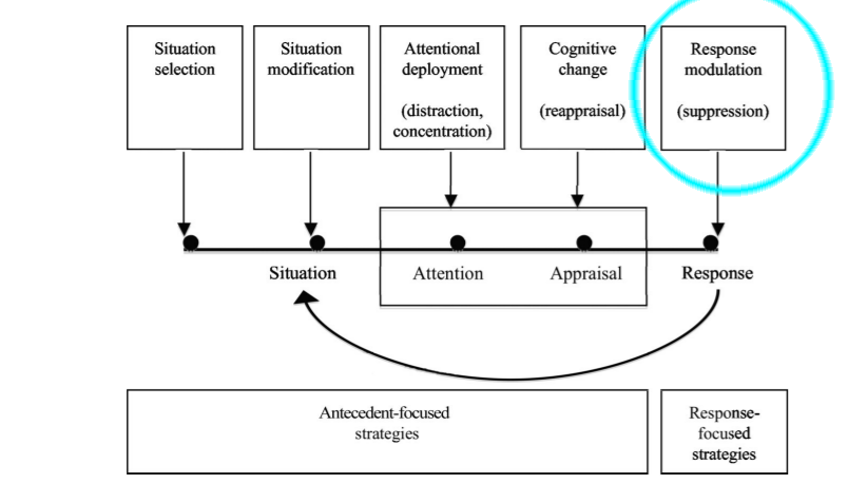Chapter 14 – Emotion Regulation
Response Modulation
Response Modulation occurs after the emotion has already developed. During response modulation, people any of the emotion components. Table 2 outlines the types of emotion regulation.

Table 2
Response Modulation Emotion Regulation Strategies
| Type of Response Modulation | Definition | Examples |
|---|---|---|
| Changing Subjective Feelings/Physiological Arousal | Changing the valence or activation of our consciously felt emotions |
|
| Changing Behaviors | Changing the behaviors caused by the original emotion. Includes changing facial expressions and vocal changes. |
|
| Changing Thoughts | Suppressing or increasing thoughts to change emotion |
|

